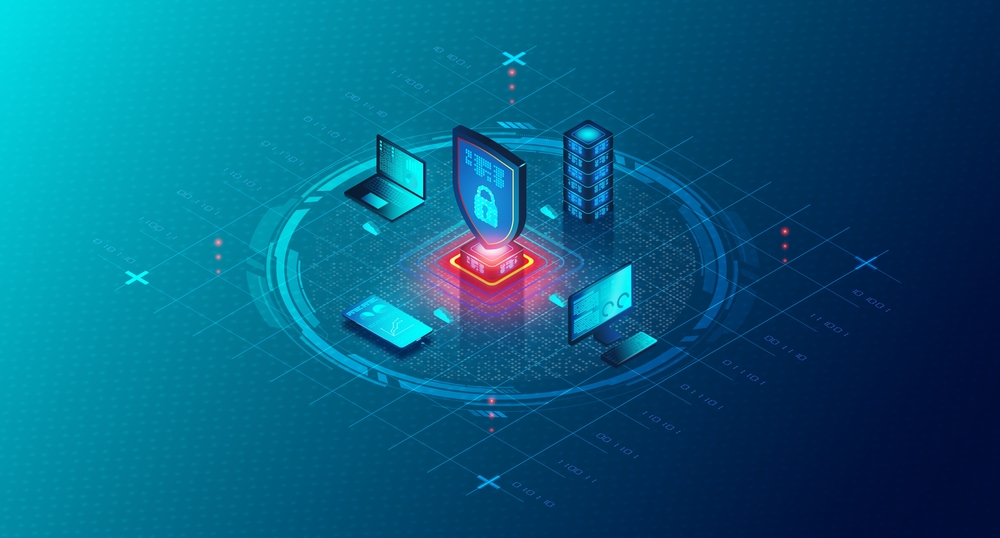Secure Network Architectures for Remote and Hybrid Workforces
- November 26, 2025
- Posted by: Gradeon
- Categories: IT Infrastructure, Cyber Security

As remote and hybrid working models continue to shape the modern business landscape, organisations face new challenges in securing their digital environments. The traditional perimeter-based approach is no longer enough. Teams now operate from homes, co-working spaces, cafés, and across multiple geographic locations, connecting through various devices and networks.
This shift makes secure network architecture essential not only for protecting data but also for maintaining operational resilience, ensuring compliance, and enabling seamless day-to-day productivity.
For organisations investing in modern IT infrastructure solutions, secure network design is no longer optional, it’s fundamental to survival in a threat-filled digital world.
Why Secure Network Architecture Matters Today
When staff were office-bound, controlling access, managing devices, and monitoring network behaviour were relatively straightforward. Now, with hybrid models becoming the long-term norm, the attack surface has drastically expanded. Unsecured home routers, shared devices, shadow IT tools, and unmanaged cloud access have created countless vulnerabilities.
Secure network architecture brings structure and safety to this complexity. It provides a strategic framework for how remote and hybrid teams connect to systems, how data flows, and how threats are detected and contained.
A well-designed architecture does more than enhance cyber security, it supports IT governance, strengthens organisational resilience, and contributes to operational excellence by reducing friction and outages.
The Core Components of a Secure Hybrid Workforce Network
Delivering robust security for distributed teams involves a blend of technology, governance, and continuous monitoring. Modern network architecture typically includes:
1. Zero Trust Network Access (ZTNA)
With Zero Trust, no user or device is trusted by default. Access is granted only after continuous verification. This model is ideal for remote workforces because it dramatically reduces the risk of compromised credentials, which remains one of the biggest causes of breaches.
2. Secure Remote Access
Traditional VPNs are no longer enough on their own. Businesses are increasingly adopting identity-based access, encryption, MFA, and device posture checks to ensure only authorised users can access sensitive resources.
3. Cloud Security Controls
Most hybrid environments operate across cloud platforms. Secure network architectures integrate:
- Identity and Access Management (IAM)
- Cloud firewalls
- Continuous monitoring
- Configuration enforcement
These controls help maintain compliance and reduce the risk of misconfigurations — a common issue in hybrid environments.
4. Network Segmentation
Separating systems into secure zones limits the spread of attacks. If one endpoint is compromised, sensitive systems remain protected. This is particularly important when remote endpoints are involved.
5. Continuous Monitoring & Incident Response
Monitoring user activity, network traffic, and device behaviour is essential for real-time threat detection. This supports business resilience by ensuring rapid response to anomalies and potential breaches.
Supporting Compliance and IT Governance
Compliance requirements such as GDPR, ISO 27001, PCI DSS, and DORA demand strict control over how data is accessed, transmitted, and stored. Secure network architecture plays a crucial role in meeting these obligations.
For example:
- ISO 27001 controls require organisations to secure remote access, manage assets, implement access control, and monitor systems.
- GDPR mandates appropriate technical and organisational measures to protect personal data.
- PCI DSS has specific controls for remote access to cardholder data.
By embedding strong IT governance frameworks into network design, businesses ensure compliance is not an afterthought but an inherent part of daily operations.
How IT Infrastructure Solutions Enhance Hybrid Work Security
Many organisations are modernising their office infrastructure setup to support hybrid teams. But simply adding new tools is not enough. Infrastructure must be planned, designed, and managed through a security-first lens.
A secure network architecture ties directly into:
- IT infrastructure services, such as device management, cloud hosting, server configuration, and network administration
- Operational resilience, ensuring teams can work without interruption even when systems are under attack or experiencing downtime
- Operational excellence, enabling fast, stable, and reliable access to business applications
When infrastructure and security are aligned, hybrid teams benefit from a seamless work experience without compromising protection.
The Role of Cyber Security Consultants in Strengthening Network Architecture
Many organisations partner with experts to guide the design and implementation of secure network architecture. Working with a cyber security consultancy in UK helps businesses gain access to specialised expertise, especially in areas like:
- Zero Trust implementation
- Compliance mapping
- Cloud security architecture
- Incident response planning
- Supply chain & third-party access control
Consultants also help organisations build long-term resilience by embedding strong governance practices and ensuring that security investments align with business strategy.
Building Resilience for the Future of Work
Hybrid work is here to stay. As the workforce becomes more decentralised, organisations must take a proactive approach to securing networks and strengthening infrastructure. This means continuously assessing vulnerabilities, updating policies, training staff, and adopting new technologies that align with evolving threats.
A secure network architecture is not a one-time project. It’s an ongoing commitment to resilience, compliance, and excellence — qualities that allow organisations to remain competitive, trustworthy, and future-ready.
Final Thoughts
Secure network architectures for remote and hybrid workforces are no longer just a technical requirement, they are a strategic necessity. By combining cyber security best practices with strong IT governance, modern IT infrastructure solutions, and structured compliance frameworks, businesses can confidently support flexible work models without compromising safety.
For organisations aiming to build resilience and drive operational excellence, now is the time to prioritise secure, scalable, and future-proof network design.
